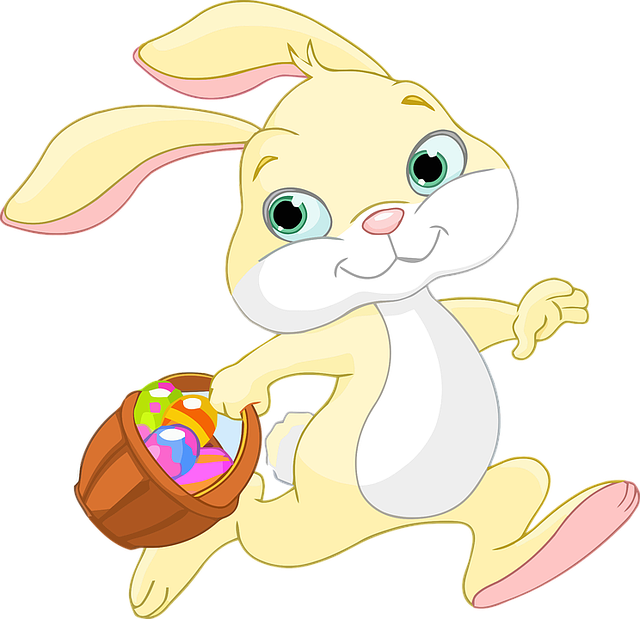Have you ever wondered how the Easter Bunny and colored eggs came to be symbols for Easter?
The earliest recorded mention of a bunny, rabbit or hare that brings eggs to children at Easter began among German Lutherans. In 1682, Georg Franck von Franckenau's De ovis paschalibus (About Easter Eggs) depicts the already established German tradition of an Easter Hare bringing Easter eggs for the children. This "Easter Hare" originally judged whether children had been naughty or nice at the start of Eastertide much like Santa Claus during the Christmas season.
The Easter Bunny is sometimes depicted with clothes and carries colored eggs in his basket, candy, and toys to the homes of children on the night before Easter.
In ancient times, many believed rabbits were capable of asexual reproduction. This concept of procreation without traditional sex fit into the medieval church’s reverence for the Virgin Mary and rabbits were heavily featured in religious artwork of that time period.
When the rabbit’s prolific mating habits became known, it became a symbol of fertility and rebirth during the Vernal Equinox.
In Orthodox churches, it was common to abstain from eating eggs during the fast of Lent. In an effort to keep eggs from spoiling during Lent, people boiled or roasted them. These “preserved eggs” would then be eaten to break their fast. Christians of the Eastern Orthodox Church colored the eggs by boiling them with flowers which brought the colors of spring into their homes. The color red is often used to symbolize the blood of the sacrificed Christ and the renewal of life in springtime. Some also use the color green, in honor of spring.
Pysanky, the Ukrainian art of decorating eggs for Easter actually dates back to ancient, pre-Christian times. It is also present in the artwork of other eastern and central European cultures.
German Protestants discontinued the custom of fasting, but kept the custom of eating colored eggs for Easter. They brought the egg-giving hare to America in the 18th century.
Among the Pennsylvania Dutch, the "Osterhase" is a hare that brings eggs to good children during Easter.
In Northwest European folklore the "Easter Bunny" is also a hare. Children would make nests in their caps and bonnets before Easter and leave them out for the Easter Bunny, but the hare would only leave gifts of colored eggs in the nests of children who had been good.
The name Peter Cottontail which has become synonymous with the Easter Bunny is actually from a book. In 1910, Thornton Burgess, from Springfield, Massachusetts, penned the first installment of his Old Mother West Wind series about a group of animals including Peter Rabbit. Beatrix Potter’s character Peter Rabbit was a favorite of Burgess’ four year old son who refused to let his father refer to any rabbit character by any name other than Peter Rabbit.
In The Adventures of Peter Cottontail, Peter decides to change his name to Peter Cottontail which makes him feel more important. The change is quite brief and Peter decides he likes being plain Peter Rabbit after all.
After Gene Autry’s 1950 recording, "Here Comes Peter Cottontail," which became popular on both Country and pop charts, the Easter Bunny gained an unofficial name.
















